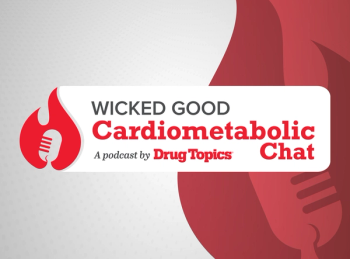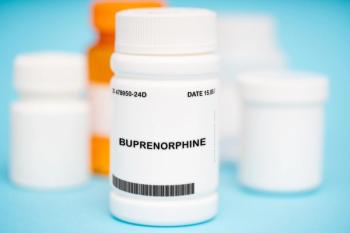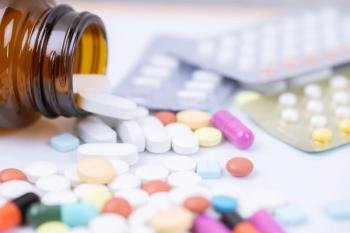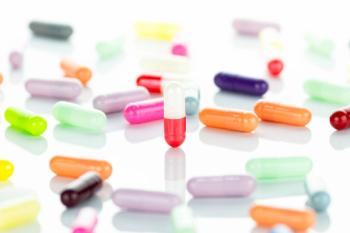
Results Show SGLT2 Inhibitors Are Associated With Erythrocytosis
Investigators also report that sodium-glucose cotransporter 2 inhibitors are not associated with thrombotic risk.
Although sodium-glucose cotransporter 2 inhibitors (SGLT2i)–induced erythrocytosis is prevalent, investigators found it was not associated with thrombotic risk, according to results of a study published in JAMA Network Open.1
“In our study, treatment with SGLT2is was associated with a mean increase of 0.35 and 0.37 g/dL in hemoglobin and a 1.4% and 1.5% increase in hematocrit compared with DPP-4is and GLP-1RAs, respectively,” the study authors said.1 “The rise in hemoglobin was slightly lower than in previous randomized clinical trials and observational studies that reported an increase in hemoglobin, ranging between 0.5 and 1.0 g/dL.”
SGLT2i include canagliflozin, dapagliflozin, empagliflozin, and ertugliflozin, which are approved to treat type 2 diabetes by improving blood sugar. The drugs can prevent reabsorption of filtered glucose from the tubular lumen. Although FDA-approved indications include glycemic control, reduction of major adverse cardiovascular events, and reduction in risk of cardiovascular hospitalization and death for patients with heart failure, off-label uses include management of obesity in combination with glucagon-like peptide-1 (GLP-1) and metabolic dysfunction–associated steatotic liver disease.2
One of the risks of SGLT2i has been an increase in hematocrit levels, ranging from 2.3% to 3.5% in clinical trials, according to data from a case series published in Endocrine Abstracts. This rise raises concerns about an elevated risk of thrombotic events; however, the investigators noted that current guidelines and recommendations do not address the concern.3
Investigators of the study aimed to determine the prevalence, risk factors, and temporal trends of SGLT2i-induced erythrocytosis as well as erythrocytosis associated with an increased risk of arterial and venous thrombosis. Investigators included patients who initiated SGLT2i or a comparator, including GLP-1s or dipeptidyl peptidase 4 inhibitors (DPP-4i). Patients were 18 years and older with type 2 diabetes and participated from January 1, 2015, through June 30, 2024.1
Investigators included 2 cohorts: 68,776 pairs of individuals receiving either DPP-4i or SGLT2i and 65,756 pairs of those receiving GLP-1s or SGLT2i. Before treatment initiation for the SGLT2i and DPP-4i groups, the prevalence of erythrocytosis was 6.7% and 5.6%, respectively, rising to 12.1% in the SGLT2i group and decreasing to 3.5% in the DPP-4i group. Investigators found similar trends for stricter erythrocytosis criteria. As for the SGLT2i and GLP-1 groups, before treatment, the incidence of erythrocytosis was 6.1% and 6.3%, respectively. After treatment, the SGLT2i group had an increase to 11.9%, and the GLP-1 group had a decrease to 5.1%.1
For thrombotic risk, investigators said that new-onset erythrocytosis was not associated with an increased risk of myocardial infarction, venous thromboembolism, or stroke when evaluating strict criteria. For more lenient criteria, investigators noted that erythrocytosis was associated with a reduced risk of stroke. For all events in the Kaplan-Meier analysis, there was no difference in risk for those treated with SGLT2i and those who were not.1
The hemoglobin levels for the SGLT2i group compared with the DPP-4i group were 13.37 g/dL at baseline to 13.72 g/dL 1 year after treatment and 13.28 g/dL to 13.09 g/dL, respectively. For SGLT2i and GLP-1, hemoglobin levels were 13.36 g/dL to 13.72 g/dL and 13.38 g/dL to 13.37 g/dL, respectively. As for hematocrit levels, SGLT2i had an increase from 41.07% to 42.49% at 1 year of treatment when compared with DPP-4i, and from 41.02% to 42.52% when compared with GLP-1s.1
“In our study, SGLT2i-induced erythrocytosis was not associated with an increased risk of arterial or venous thrombosis. These findings strengthen the limited existing literature that previously explored the association between SGLT2i-induced erythrocytosis and thrombotic events,” the study authors concluded.1 “Interestingly, at lower erythrocytosis thresholds, as defined in our study using the lenient criteria, there was even a reduction in the risk of stroke.”
READ MORE:
Ready to impress your pharmacy colleagues with the latest drug information, industry trends, and patient care tips? Sign up today for our
REFERENCES
1. Lewis M, Burrack N, Heymann A, Grossman A, Neuman T, Abuhasira R. Sodium-glucose cotransporter 2 inhibitors, erythrocytosis, and thrombosis in adults with type 2 diabetes. JAMA Netw Open. 2025;8(6):e2517086. doi:10.1001/jamanetworkopen.2025.17086
2. Padda IS, Mahtani AU, Parmar M. Sodium-glucose transport protein 2 (SGLT2) inhibitors. In: StatPearls [Internet]. StatPearls Publishing; 2025-. Updated June 3, 2023. Accessed August 14, 2025. https://www.ncbi.nlm.nih.gov/books/NBK576405/
3. Verissimo D, Pereira BR, Vinhais J, Ivo C, et al. SGLT-2 inhibitors-induced erythrocytosis: a case series. Endocrine Abstracts. 2024;99EP426. doi:10.1530/endoabs.99.EP426
Newsletter
Pharmacy practice is always changing. Stay ahead of the curve with the Drug Topics newsletter and get the latest drug information, industry trends, and patient care tips.






































































































































